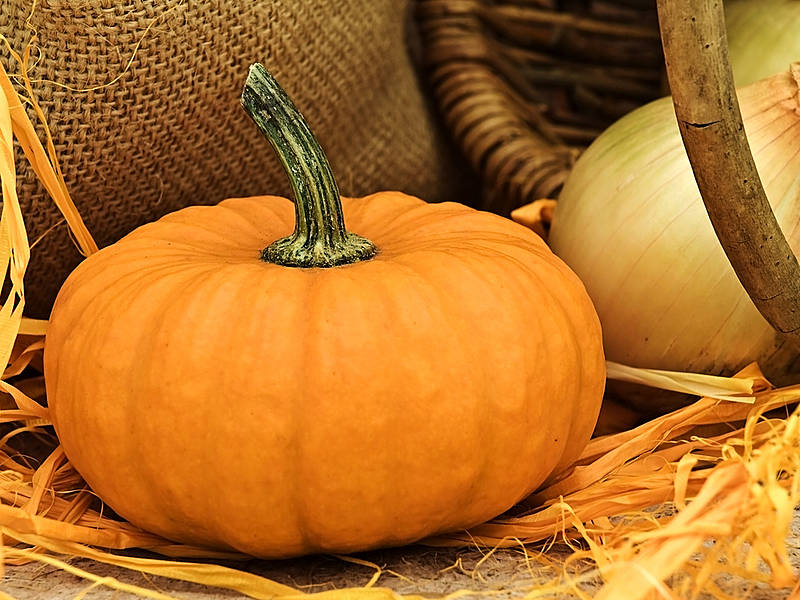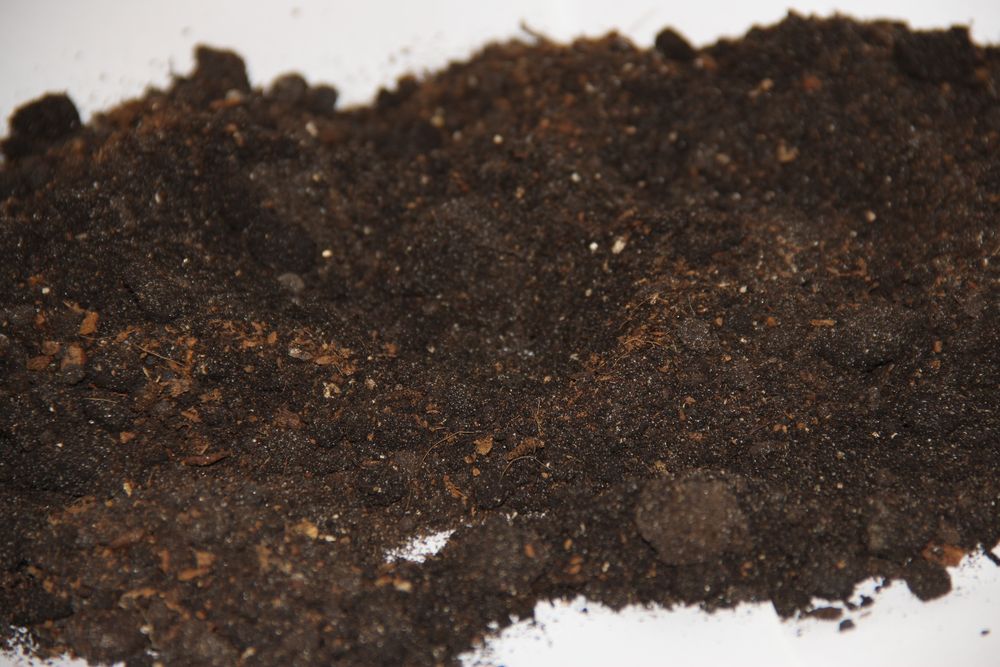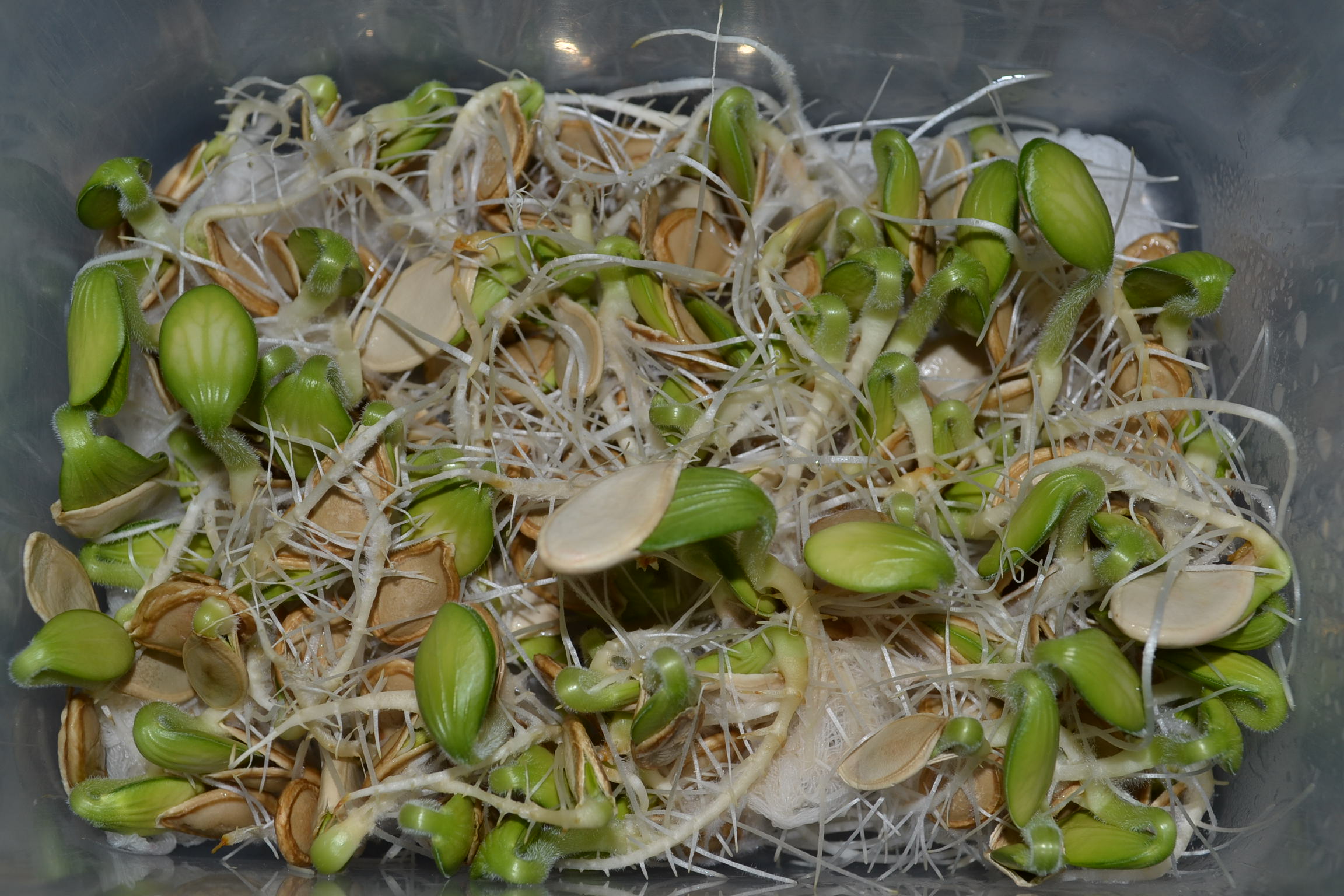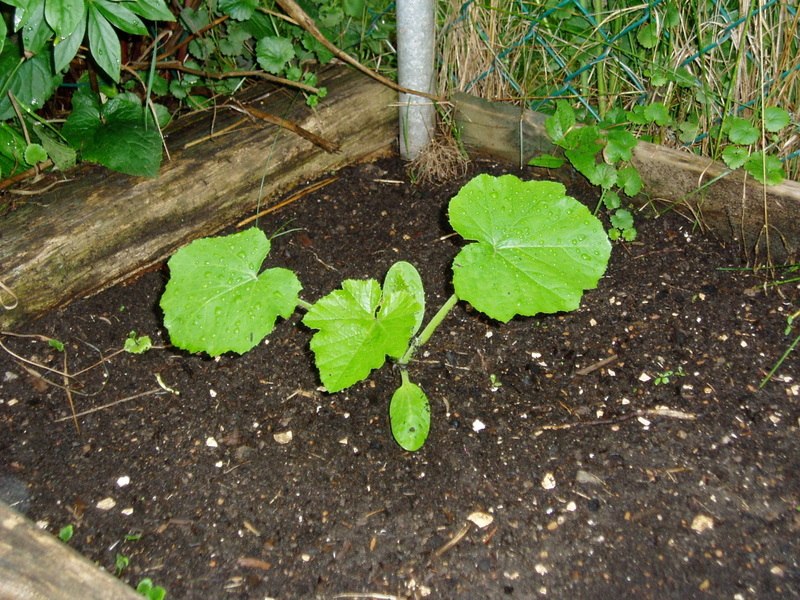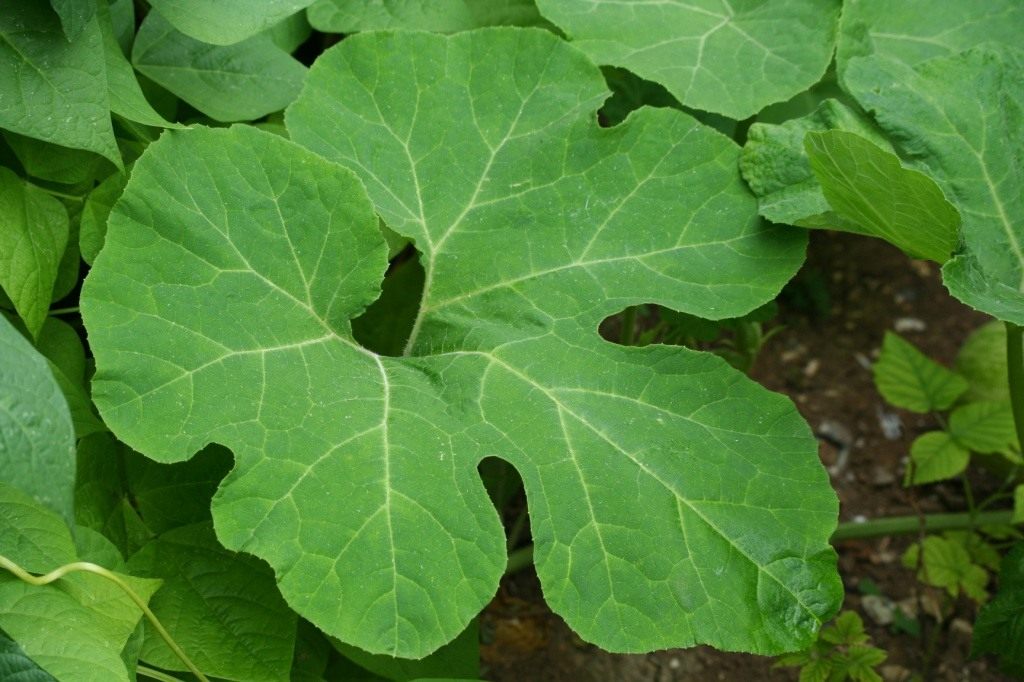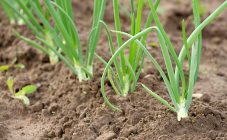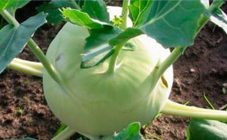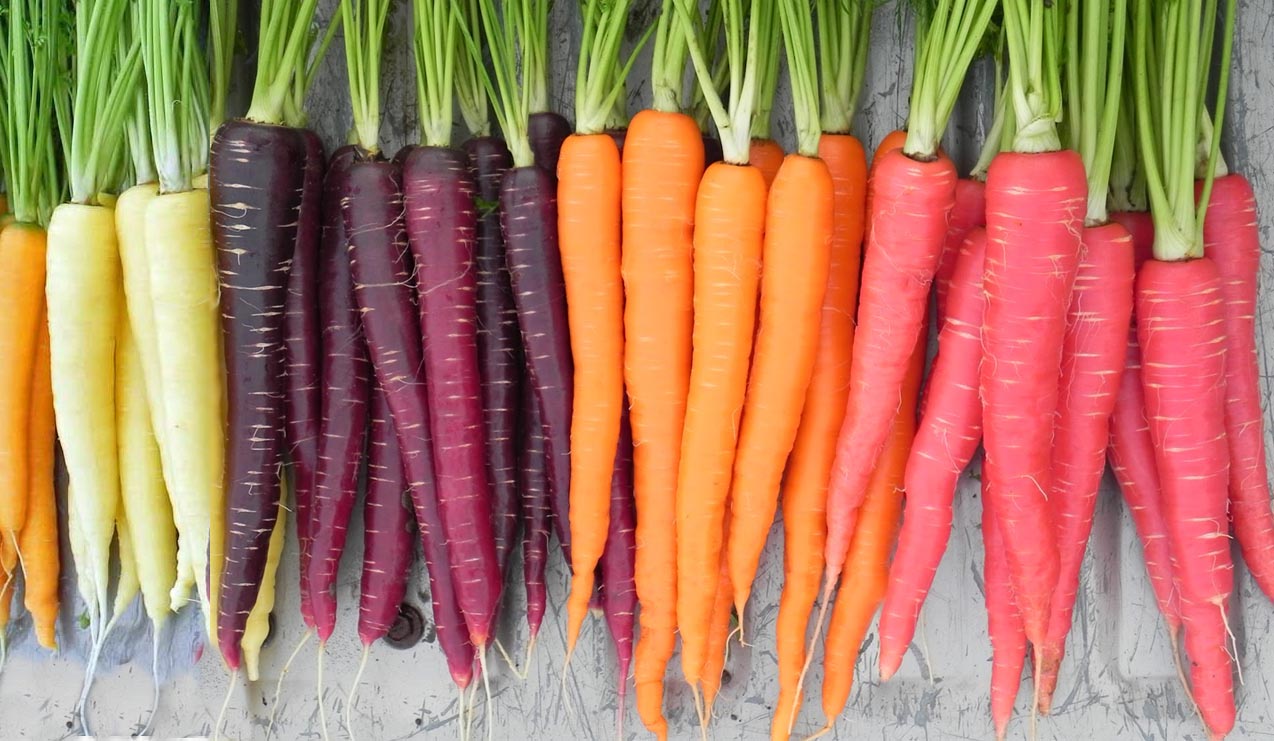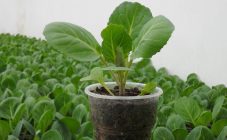Content:
Pumpkin is grown in many garden plots, because this vegetable is not picky about planting and care, it grows on almost any type of soil, gives good yields, even if the owners do not often have the opportunity to care for this plant. Ripe pumpkins have excellent taste, so many different dishes are prepared from them.
And you should start growing this vegetable crop with the correct planting of seed in open ground. How and when to plant a pumpkin in open ground, what days in 2018 will be favorable according to the lunar calendar in order to plant this plant in open ground - all this and much more will be written below.
Pumpkin: when to plant seeds outdoors
When to sow a pumpkin in our country depends on the specific climatic characteristics of the regions. Many melon growers in the southern regions of Russia already at the end of the first decade of May begin to grow pumpkin in the beds. But for summer residents of the Chernozem region, the Moscow region, the middle lane and other similar regions, when the question arises about when to plant a pumpkin in open ground, it should be borne in mind that a favorable average pumpkin planting time begins in the middle of the last decade of May.
Landing rules
The first thing to start with growing pumpkin is to choose a site for sowing this crop. It is on this that the future bountiful harvest will depend. The place should be sunny, protected from wind gusts and drafts. But many vegetable growers claim that they grew this melon plant in the shade and partial shade, while receiving yields no less than in the beds illuminated by the sun. You need to plant a seed or seedlings in sandy or sandy loam soil, because it quickly warms up under the warm rays of the sun.
When growing these vegetables, do not forget about the rules of crop rotation. It is best to grow pumpkin after perennial grasses, green manure, corn, winter wheat, carrots, cabbage, tomatoes, onions, legumes, lentils, peanuts. But after melons (watermelons, zucchini, melons, squash, cucumbers), pumpkin can be grown in the beds only after 4-5 seasons.
You need to prepare the beds at the end of the previous season:
- remove all plant residues and weeds;
- loosen the soil with a hoe;
- in a couple of weeks, carry out an autumn digging. For autumn digging, organic fertilizers (manure, compost or humus) must be applied, for 1 m² - at least a bucket of organic matter. Fertilizers must be sealed when digging to a depth of 20 cm.
The day before planting seeds or seedlings, the beds are again dug up and leveled with a rake.
If in the fall it was not possible to add organic matter, then before planting, 1.5 kg of rotted manure mixed with 1 tbsp. l. superphosphate and 1 tsp. calcium salts (but not containing chlorine).
Some summer residents successfully grow this melon crop on compost heaps. Such cultivation gives good results:
- the opportunity to get a high yield;
- improve the composition of the compost;
- the vegetative mass of the plant prevents the growth of weeds;
- pumpkins growing on compost accelerate the decomposition of large plant residues;
- the green mass of the plant serves as a beautiful cover for the compost pit;
- pumpkin growing on such piles is regularly watered, thereby preventing the decomposing fertilizer from drying out.
Seeds bought in specialized stores do not need additional processing, but only preliminary soaking to accelerate germination. It is best to use an ash solution for this - 4 tbsp is diluted in 2 liters of boiling water. l. wood ash, a cloth is soaked in this solution, in which the pumpkin seeds are then wrapped for ½ day.
Sprouted seeds can be immediately planted in the ground, or you can pre-grow seedlings at home.
Planting seed material for seedlings is carried out 25-30 days before transplanting young plants to a permanent place. The nutrient substrate is prepared in advance, it is better if it is the same in composition as in the beds in the garden, so that the seedlings do not have to get used to the new type of soil later.
Seeds can be planted in long boxes, while the distance between adjacent shoots should be at least 6-7 cm.But many vegetable growers immediately plant seed material in separate cups, so it is more convenient to transplant them to a permanent place - along with an earthen lump.
Seedlings are grown in the same way as other melons and gourds - they are regularly watered so that the topsoil does not dry out. You should also feed the seedlings twice before planting them in a permanent place - the first time with a solution of nitrophoska, and the second time with a solution of cow manure mixed with any potassium salt.
When directly planting seed in open ground, it is necessary to prepare planting holes, in which mineral complex additives are added, watered. The seeds should be laid out in the holes after all the moisture has been absorbed into the soil. 2-3 seeds are placed in each hole, then the strongest is taken from the seedlings and the rest is removed.
The main thing is to keep the distance between these weaving vegetables when planting. Between varieties with long lashes, the average length is 1.7-2.0 m, and between the rows - at least 1.5 m.If the pumpkin is bush, then it is planted according to the following scheme - 0.8 x 0.9 m or 1, 3 x 1.3 m.
After planting, the holes on top are mulched with a layer of humus or peat. To speed up the emergence of shoots, small greenhouses can be installed on top.
Time and temperature of planting pumpkin in open ground
Despite its unpretentiousness, the pumpkin has some qualities that should be considered before planting its seeds or seedlings for a permanent place in the garden. This culture belongs to melons, which are all quite heat-loving plants. And although pumpkin is more cold-resistant than watermelon or melon, it is also impossible to plant it in unheated ground - you can not wait for seedlings, and the seedlings will freeze.
You also need to take into account the likelihood of spring frosts, which may return in May. Therefore, if in the south of our country this melon crop can be planted in the beds already in the first decade of May, then in colder regions the planting time is shifted by 10-13 days.
For planting seeds or pumpkin seedlings on the beds, the ambient temperature should be at least 17 ° С, and the soil should be warmed up to a depth of 10 cm to 13-14 ° С.
Planting time depends on when the chance of a spring frost has passed.In the south, the pumpkin is planted directly with seeds in the beds, and in colder regions, seedlings are preliminarily grown, planting them at home a month before transplanting into open ground. Usually the timing of planting this vegetable plant in the garden is from mid to late May.
Care and cultivation techniques
How to grow pumpkin seedlings in the garden and get a good harvest from them? The answer is obvious - after planting in fertilized well-lit beds, they must be properly cared for.
The transplanted seedlings usually take root for about two weeks (if the roots are not damaged during transplantation), and the seeds planted in open ground sprout in about a week. Further care for this melon crop consists in carrying out the following procedures:
- regular watering;
- loosening row spacings;
- weed removal;
- fertilization;
- fight against diseases and "harmful" bugs.
The vegetative mass of this vegetable plant grows quickly, the foliage grows large, therefore, it regularly evaporates a large amount of moisture, which must be constantly replenished.
Watering is carried out only with warmed water, cold moisture introduced under the base of the plant leads to a slowdown in the growth of bushes and lashes. As the lashes grow, the amount of water introduced should increase.
When the fruits begin to increase in size, the volume of watering is increased again. A couple of weeks before harvesting ripe fruits, the rate of moisture introduced for one plant is 1 bucket. After the fruits have stopped growing, moisture under the plants need not be applied.
The trunk circles around the pumpkin bushes should be loosened regularly, while simultaneously destroying all weeds. This procedure is carried out after each watering (or rain). You also need to loosen the space between the rows before each application of water - in this case, moisture and oxygen will penetrate deep into the soil faster. When loosening, you need to huddle a little in order to increase their durability.
The crops are thinned out after the seedlings have a pair of permanent leaves. The thinning procedure is carried out as follows - weaker plants are cut at ground level.
And if dry fertilizers are applied for digging or in the holes, then you need to fertilize the plants with liquid dressings. A couple of weeks after emergence, they are fertilized with slurry (mullein or chicken droppings diluted with water in a ratio of 1: 4). Fertilizers are applied in the grooves around the plants.
To harvest a good pumpkin harvest, first of all, you need to decide on the timing of planting the crop, and then provide quality care and regular watering.
